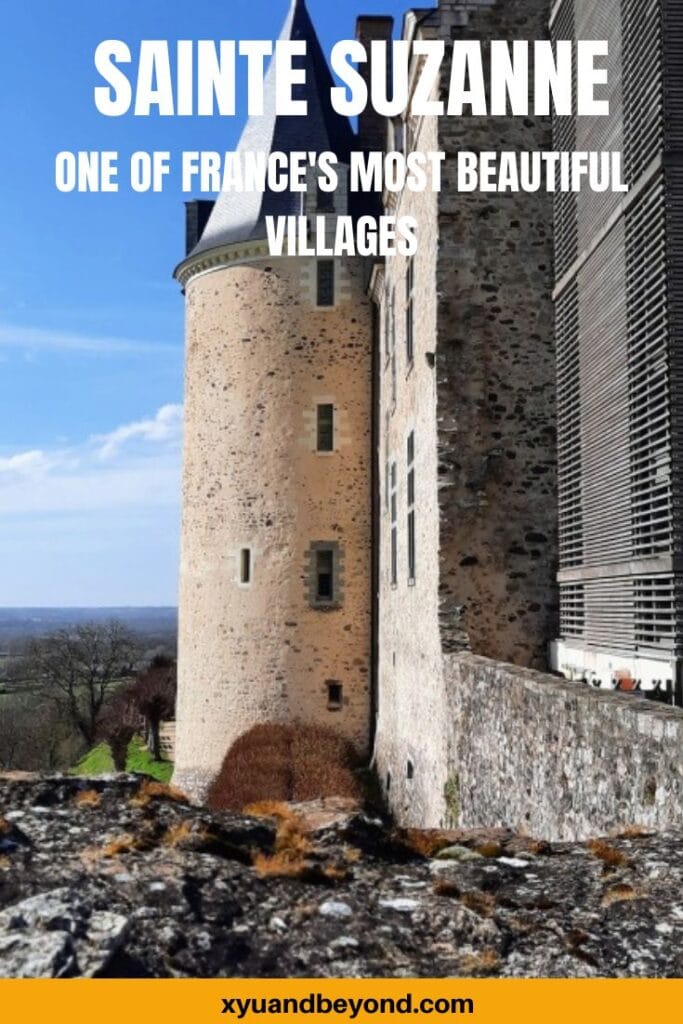Sainte Suzanne Mayenne, France A Charming Medieval Village
Sainte Suzanne is a charming medieval village and a Petites Cités de Caractère (Small Towns of Character) located in the Pays de la Loire Mayenne region of France, and it is often referred to as one of the most beautiful villages in the country. The village is perched on a hill overlooking the surrounding countryside, offering breathtaking views and a peaceful atmosphere that is perfect for a relaxing getaway.
With its cobbled streets, historic buildings, and well-preserved castle ruins, Sainte Suzanne is a popular destination for visitors looking to experience the rich history and culture of rural France. Whether you are interested in architecture, history, or simply soaking up the ambience of a quintessential French village, Sainte Suzanne is a must-visit destination that is sure to delight.
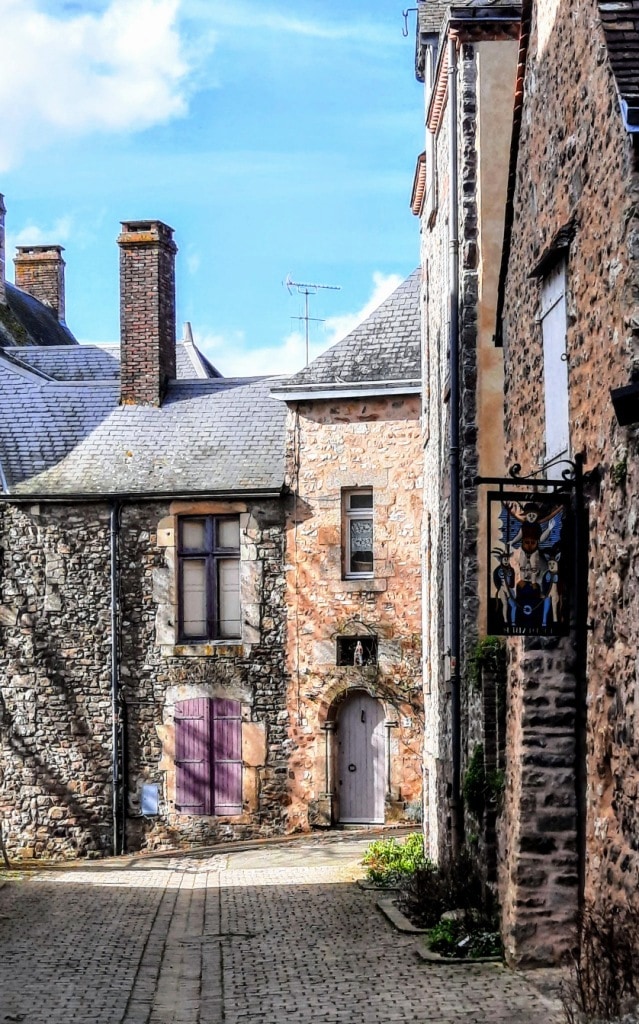
Pros and Cons of Living in France
What are the Les plus beaux villages de France?
A total of about 160 villages across mainland France and two in Corsica have been given the prestigious ‘most beautiful villages of France’ award.
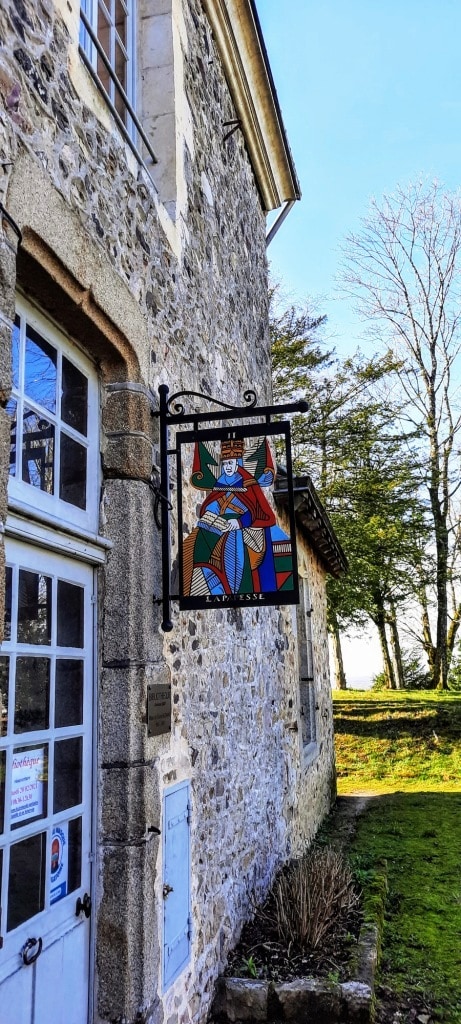
What is a Petite Cité de Caractère?
A Petite Cité de Caractère® is one which offers the opportunity to discover its particular and vibrant heritage, a place where visitors may be sure of receiving a warm and professional welcome.
Located between Laval and Le Mans, the fortified town of Sainte-Suzanne was once referred to as The Key of the Maine (Mayenne) because of its strategic location.
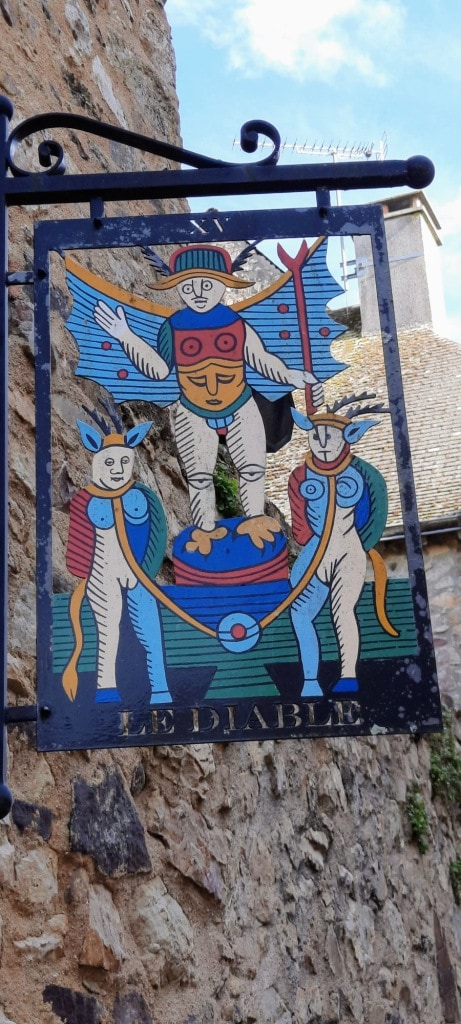
The History of Saint-Suzanne
Sainte Suzanne’s history dates back to pre-history. There are two dolmens dating from the 5th century and archaeological evidence has proved that the area was occupied by the Celts between the 5th and 9th BC centuries and then occupied by the Gauls.

During the middle ages, the town had grown to be an important stronghold in Mayenne or as it was known then the County of Maine. The Counts of Maine were based in Le Mans but the Viscount of Maine held Sainte Suzanne.
The castle of Saint Suzanne dates from the early 11th century William the Conqueror attempted to claim the town in 1083 and the resulting siege which went on for 3 years meant that he never captured the Town.

In the surrounding countryside close to the road to Assé le Bérenger you can still see some of the remains of the camp set up by the Normans during this period. Finally, after three years a negotiated peace was settled between the two sides.
During the Hundred Years’ War in 1425, the town was captured by the English who had attacked it with the newest innovation in warfare – artillery.
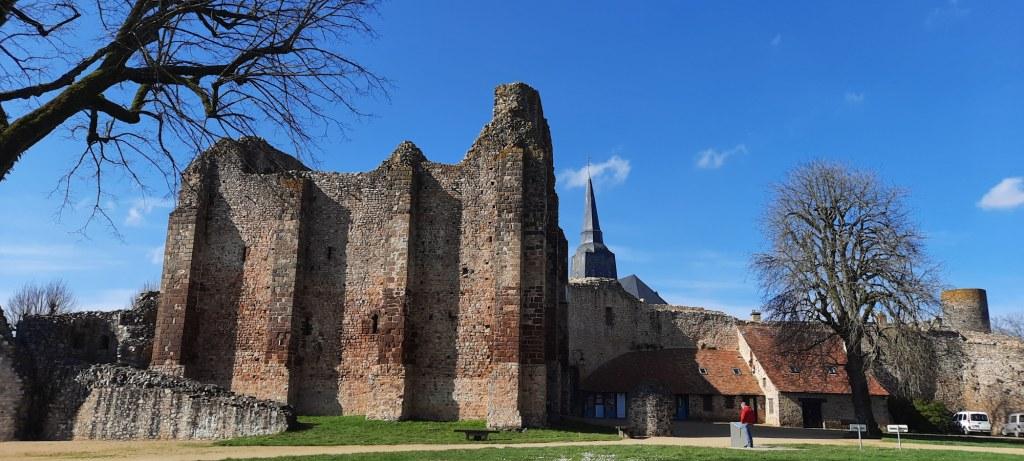
Sainte-Suzanne surrendered and was occupied by the English for 14 years. It was an English soldier in the town who was married to a French woman who betrayed the English and gave the French troops who were led by Jean de Bueil (a knight who had fought alongside Joan of Arc) entry to the town to reclaim it.
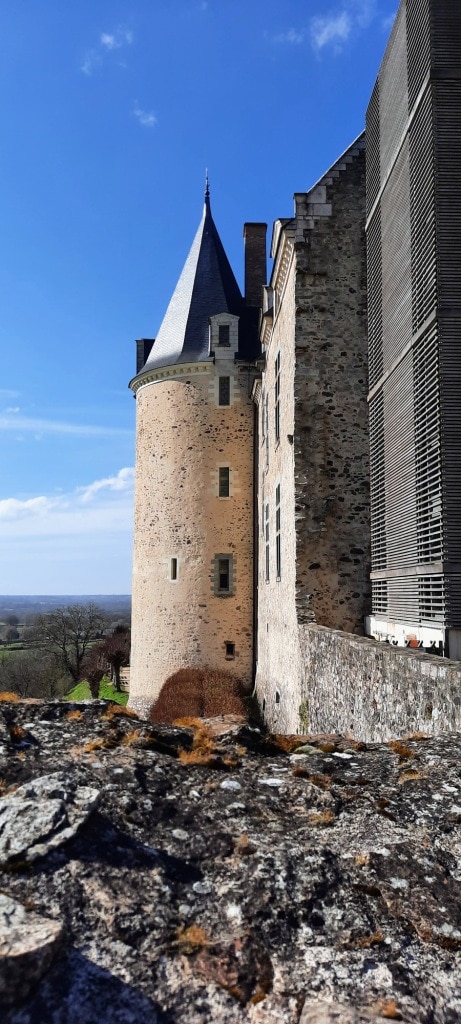
In the early 17th century the “modern” chateau” was built by Guillaume Fouquet de la Varenne. He was given the Barony of Sainte Suzanne by the wife of King Henri IV whose wife Queen Margot had the title.
Guillaume built a Renaissance Chateau that today can be seen side by side The 11th-century Romanesque keep.

Explore the Sainte Suzanne Castle ramparts and Keep
The castle ramparts and 11th-century keep are open to the public free of charge and you can take in some outstanding views of the area around the ramparts.

Explore the Interpretation Centre for Architecture and Heritage
The Interpretation Centre for Architecture and Heritage is tucked away inside the 17th-century interiors of the Château de Sainte-Suzanne. Audiovisual media, models, terminals, touch-screen devices, wall projections, panels, guided tours and educational workshops give you insight into the multifaceted local heritage.

The Auditorium Museum – Musée de l’Auditoire
The local history museum contains an interesting collection of artefacts relating to the town, including the oldest plate armour ever found in France and a model of the siege camp of William the Conqueror.
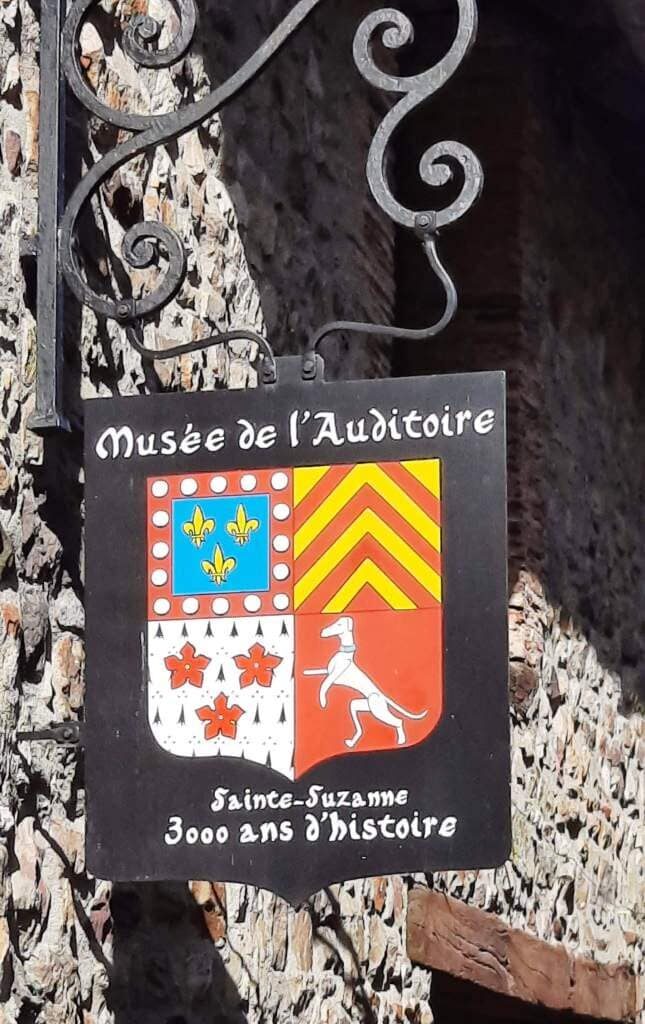
Opposite the museum is a house with an exceptionally large window. This is the Carterie, a 17th and 18th-century factory producing playing cards manufactured from paper produced by the local mills. The large window gave light to the draughtsmen and printers who were producing the cards.
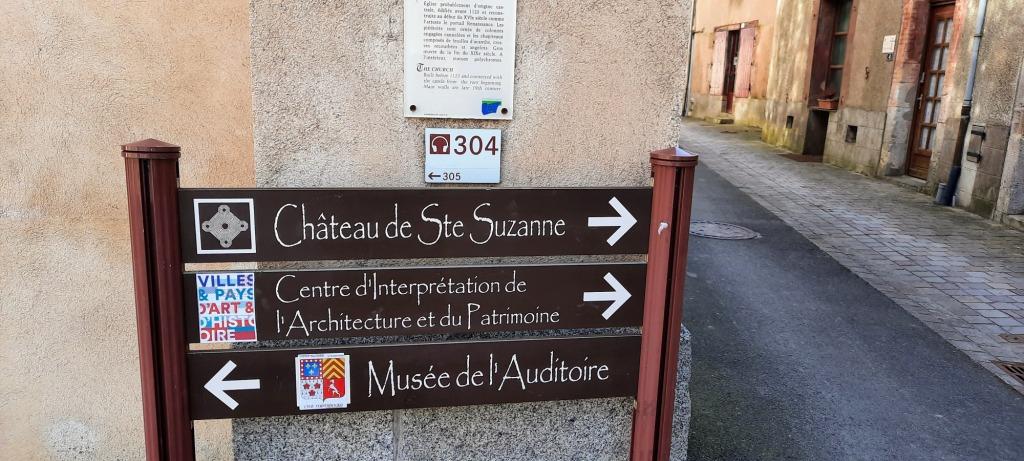
Église Sainte-Suzanne
This building dates from 1884 and stands on the site of two earlier church buildings, one dating from the Middle Ages and the second from the 16th century. The carved portal from the 1555 church framing the door of the present church is the only remaining vestige of the earlier buildings.
The Church houses a number of exciting statues dating from the 14th to the 18th century, most notably a particularly fine statuette of John the Baptist and, in the choir, a figure of Sainte Suzanne, patron saint of engaged couples.
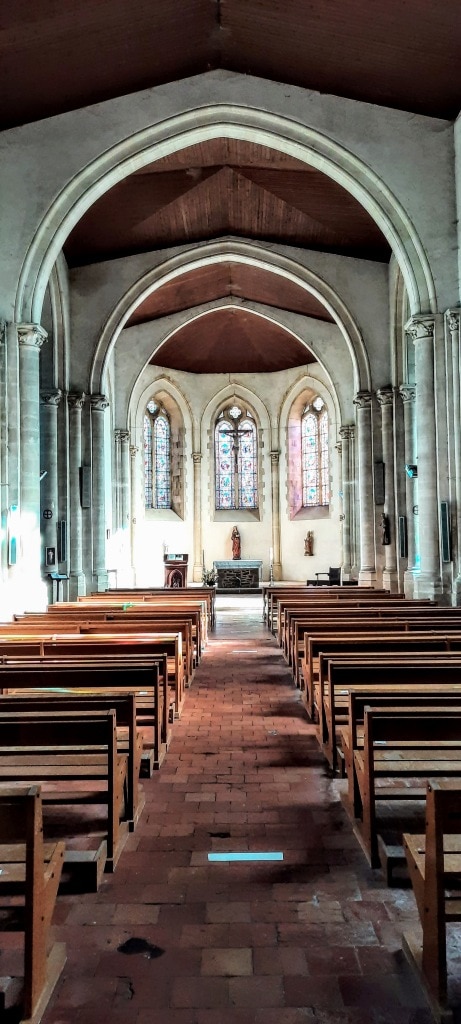
Visit the Sainte-Suzanne mill
Formerly a grain mill from the Middle Ages to the 20th century, the Sainte-Suzanne mill is now home to a traditional paper-making company.
The main activity of the Paper Mill is the manufacture of sheets of “pure rag” paper. Formed by hand, sheet by sheet, only from rag (old cotton, hemp or linen sheets). The Master Papermaker, Carlos Robert, is one of the last papermakers in France to make his own pulp. An ancient technique inherited from the Master Papermakers of the 13th century.

During a one-hour guided tour, the Master Papermaker will take you into his universe and share with you his passion for beautiful paper. You will discover the tools invented by the Italian papermakers of the 13th century.
Visit the Dolmen des Erves
The Erves dolmen is a dolmen located in Sainte-Suzanne the first excavation took place in 1868 and the dolmen was classified as a historical monument in 1889.

The discoveries included fragmented human bones, corresponding to fourteen individuals 9 adults and 5 children. The grave goods, which were very poor, included a cup with a decorated base a pierced horse/pony tooth and a seashell An antler pick was also discovered. The human bones gave a date of the middle Neolithic around 4000 BC.
La Ferte-Clairbois
Not far from the town of Sainte-Suzanne, La Ferté-Clairbois is a medieval and cultural centre based within a fortified farm, that will transport you back to the Middle Ages, with horse-riding displays and medieval meals.
Bringing the 13th century back to life the “ferté” means stronghold or fortress. Housed in a magnificent dungeon near the village of Sainte Suzanne, this medieval centre offers many demonstrations on the theme of knights: costumes, staging and even food.
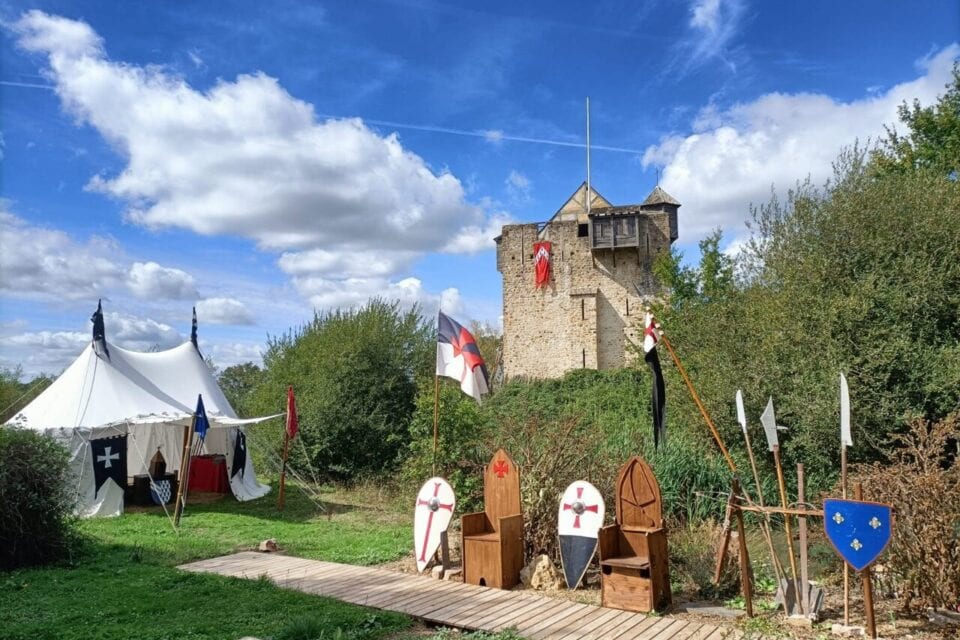
Camp des Anglais – Camp de Beugy
The “Camp des Anglais” is 1 km away on the road to Assé le Béranger and is the site where William the Conqueror constructed a fortress during the siege of Sainte-Suzanne. Also marked as “Camp de Beugy”, the earthworks and defensive ditches are well preserved, and you can explore them on foot.
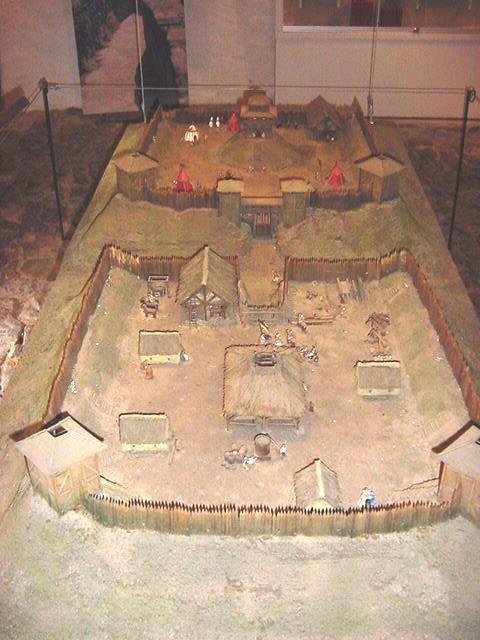
Tertre-Ganne
From this promontory to the south of the town there is a stunning panorama of Sainte-Suzanne. It can be reached by car, taking the direction of Voutré, turning right just beyond the pond at the foot of the hill. Follow this road to the summit where there is a car park. An easy 100-metre walk brings you to a picnic site with superb views of the town.
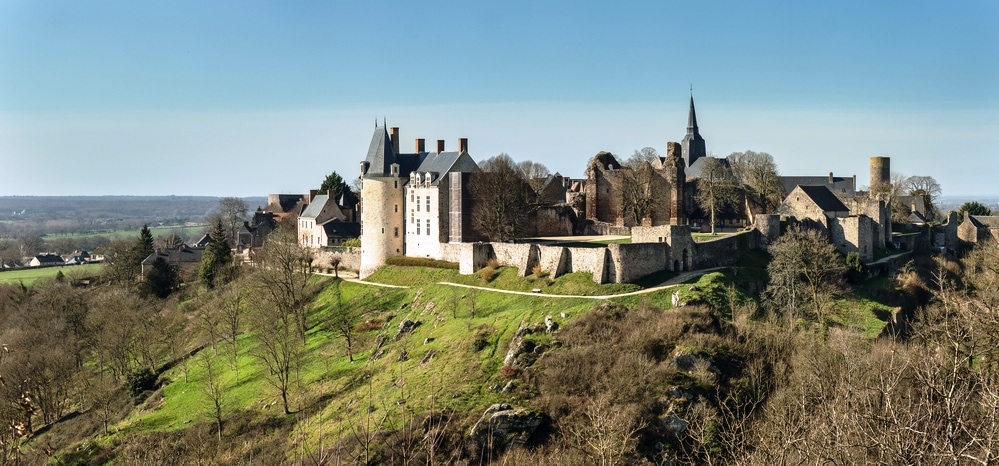
Sainte Suzanne is a pleasure to make a day trip to, you can wander the old cobblestone streets and sit at a cafe in the medieval centre and enjoy a glass of wine and just watch the world go by.
A visit to Sainte Suzanne is a journey through time that is sure to enchant and captivate anyone who appreciates the charm of medieval villages. The village’s historic buildings, winding cobbled streets, and ancient castle ruins offer a glimpse into the rich history and culture of rural France, while the stunning views of the surrounding countryside are a feast for the senses.
Whether you are a history buff, an architecture enthusiast, or simply seeking a peaceful escape, Sainte Suzanne is a destination that is sure to delight you. With its picturesque scenery, friendly locals, and tranquil ambience, Sainte Suzanne is a hidden gem that is not to be missed on any trip to the Pays de la Loire region of France.
You might also like to read more of my French articles.
French Food Culture: The Ultimate Guide
One fabulous day in Menton France
Exploring the Charms of Vitré, France: Things to do in Vitre
14 Most Beautiful Chateaux of the Loire Valley
Touring the south of France – a guide to planning your French Road Trip
Saint-Céneri-le-Gérei plus beaux villages – beautiful villages of France
Normandy Villages 22 of the most beautiful
Remarkable Rouen – things to do
Dinan France – medieval France at its finest
Cancale the charming oyster capital of France
Visiting Fougères France – City of Art and History
Sainte Suzanne Mayenne France A Charming Medieval Village
Food in Brittany: Fall in love with the food of Bretagne
Chinon France: A Royal Fortress and a medieval city
An Itinerary for Paris – How to create the perfect one
French Cheese – 23 amazing types of French cheese
Pin it to save it
